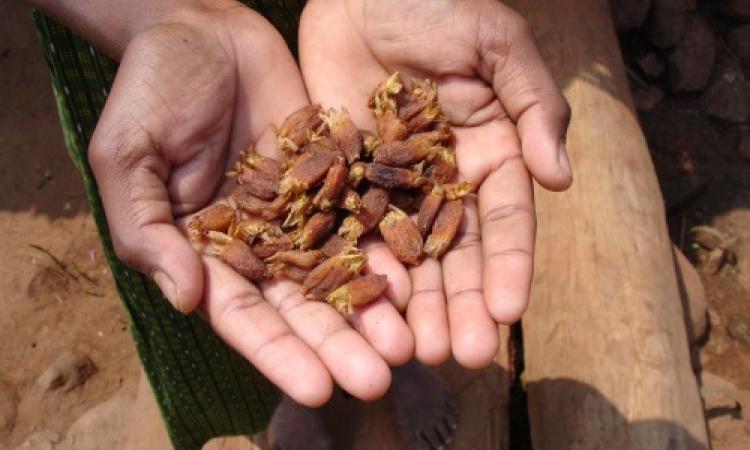
Today, rapid industrialisation, economic growth and migration to urban areas have changed how we relate to nature. The interconnection is now clearly exploitative. However, it is increasingly being realised that solutions to climate change can emerge only when we work and are closer to nature and can adapt to the changes induced by climate change by using a combination of traditional wisdom and science.
While developing a nuanced understanding of the natural surroundings around us becomes an important part of this process, preserving biodiversity – in terms of species, habitats and genetics – is important as it can lead to ecosystems that are healthier, more productive and better able to adapt to climate change
A growing emphasis on species diversity requires decision-making processes that are inclusive and which produce solutions that recognise the different roles that species play across their life spans and the various ways they nurture one another.
In teasing out solutions to support this growing and resilient complexity, it is important that systems and changing social entrepreneurs bring a ‘we are nature’ sensibility to their work.
Combining traditional wisdom with science to find solutions
We are just beginning to appreciate the importance of the convergence of traditional wisdom and new science for our collective survival. This guiding principle and insight is one of the keys to implementing climate action work at the ground level.
For example, the work by Foundation of Ecological Security (FES) provides interesting insights on this perspective.
Foundation for Ecological Security (FES) works with rural communities in ecologically degraded regions of India to collectively address issues of ecological restoration, social justice, and poverty alleviation. FES leverages its deep understanding of the interconnections between local resource systems (forests, pastures, water bodies, livestock, pollinators), rural livelihoods and other socio-economic outcomes to support communities.
"Local people are often seen as intellectually poor, and researchers, scientists, NGOs are coming in and putting 'new wisdom' into them. Local people have to be recognised for their knowledge." argues Jagdeesh Rao, Anchor and Curator, FES.
To effect change, FES, works at three levels:
- Engaging with rural communities to integrate traditional and modern knowledge systems to bring in ecological restoration
- Building a rights-based management system for community ownership
- Enabling resilient livelihoods, in the community
FES begins by tracing the governance of forests and natural resources within the local ecological, social, and economic landscape. They work with local communities to help them get land tenure, figure out self-governance plans and design conversion and restoration plans. Through this, there are ongoing discussions with the communities on the impact of their choices on the ecological thresholds of their natural resources.
The provisions of affirmative legislation including the Forest Rights Act of 2006 and the Right to Employment Act (NGEGA) already allow the right to access, use, protect, restore, and manage forests and forest produce that the community has traditionally had a right to. FES enables optimal use of the provisions under these legislations.
The combined approach of restoration, self-governance and livelihoods leads to better ecological outcomes around carbon sequestration, soil health, hydrology and biomass indices and also ensures better decision making, collaboratively, on issues such as crop choices and water conservation.
IO platform developed by FES
It also leads to comprehensive and granular data that can inform decision-making. Key features of the India Observatory (IO) platform developed by FES include:
- Multi-level information on India’s social, ecological, and economic metrics through customizable dashboards and graphics
- Access in multiple languages
- Contextual and local information to develop the most suitable natural resource management plans
- A side-by-side comparison of different benchmarks, across parameters and regions
Currently, eleven forest divisions are using the customised forest management tool from IO. Communities have today collaborated to create a database of water levels in over 20,000 wells for monitoring groundwater usage. With over 1,800 data parameters, the trends on natural habits and connected socio economic changes across regions can now be tracked using IO. Local level decision making becomes easier due to data like this which can be used by both Panchayats as well as non-profit organisations working to drive civic action and government officials, apart from the local communities.
By converging local wisdom and knowledge, and with public investments and leveraging science and technology for analytics and evidence building, FES’ communities are helping secure their commons and regenerate forests, pastures and water resource systems across the country. The results of this interconnected approach, resonates, on ground.
Design Principle 2: How has FES been successful in doing this? How should one go about it?
- Discover and value the traditional wisdom and knowledge of local people.
- Bring traditional wisdom and science together, using technology to facilitate this connection and amplify its reach.
- Give local people ownership and rights over land since they hold the wisdom and knowledge to use, protect, and manage land and natural resources.
- Initiate interventions in areas where conservation is determined by the local context.
- Work with local people and scientists/experts to design conservation and habitat restoration plans.
- Ensure financial investment for conservation and restoration efforts.
Maria Clara Pinheiro is the Director, Ashoka, South Asia. Maya Chadrasekaran is the Co Founder and Managing Director of Green Artha, a climate venture fund and innovation firm. Vidushi Kamani is the Head of the Ecosystems Programme at Green Artha.